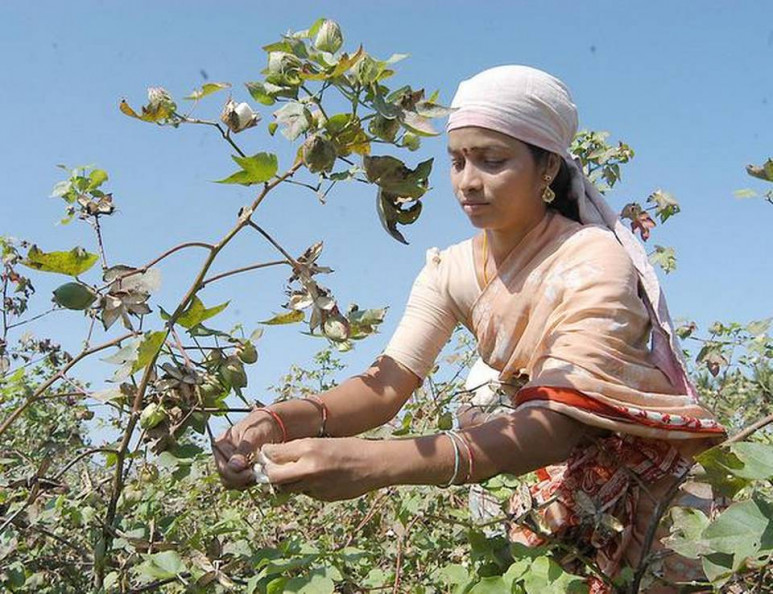New Delhi: Labor shortages in India due to the virus-led lockdown may push farmers in the nation’s second-biggest rice growing region to switch to cotton, threatening the staple grain’s production outlook.
The northern state of Punjab aims to double the area under cotton, which is relatively easier to grow, at a time when hundreds of thousands of migrant workers have left for their villages. The state is highly dependent on labor from places such as Uttar Pradesh and Bihar for its farm-related activities.
A production setback in Punjab, which accounts for about 10% of India’s rice output, could threaten the country’s target to harvest a record 298.3 million tons of food grains in 2020-21. It may also raise local rice prices, lower procurement by government agencies in the state and affect exports.
Switch to Cotton
The state government’s move to encourage more cotton planting this year will help save water and could also reduce pollution that comes from burning rice stubble after harvesting, Badal said. The crop is sown in May-June after monsoon rains and generally harvested in October.
Each year, India’s farmers burn the stubble left over from harvested rice crops, contributing to an annual haze that damages the health of those in and around its capital. India has seven of the 10 most polluted cities in the world, and toxic air was responsible for one in eight deaths in 2017.
While labor shortages are unlikely to be a problem in the ongoing wheat harvest as that’s mostly mechanized, planting rice is an issue as the process is entirely manual. There’s been a mass exodus of migrant labor from the state, and the threat of the virus will likely deter them from commuting even after the lockdown is lifted, Badal said.
Prime Minister Narendra Modi extended the nationwide lockdown through May 3 as India stepped up its fight to contain the spread of the coronavirus among its 1.3 billion people. Though farming activities are allowed with some restrictions, the movement of migrant labor has been hampered as transportation services remain suspended.
India, the world’s second-biggest grower of rice, is estimated to have produced a record 117.5 million tons of the grain in 2019-20, according to government estimates. It exports about 11 million tons of rice every year.-Bloomberg


